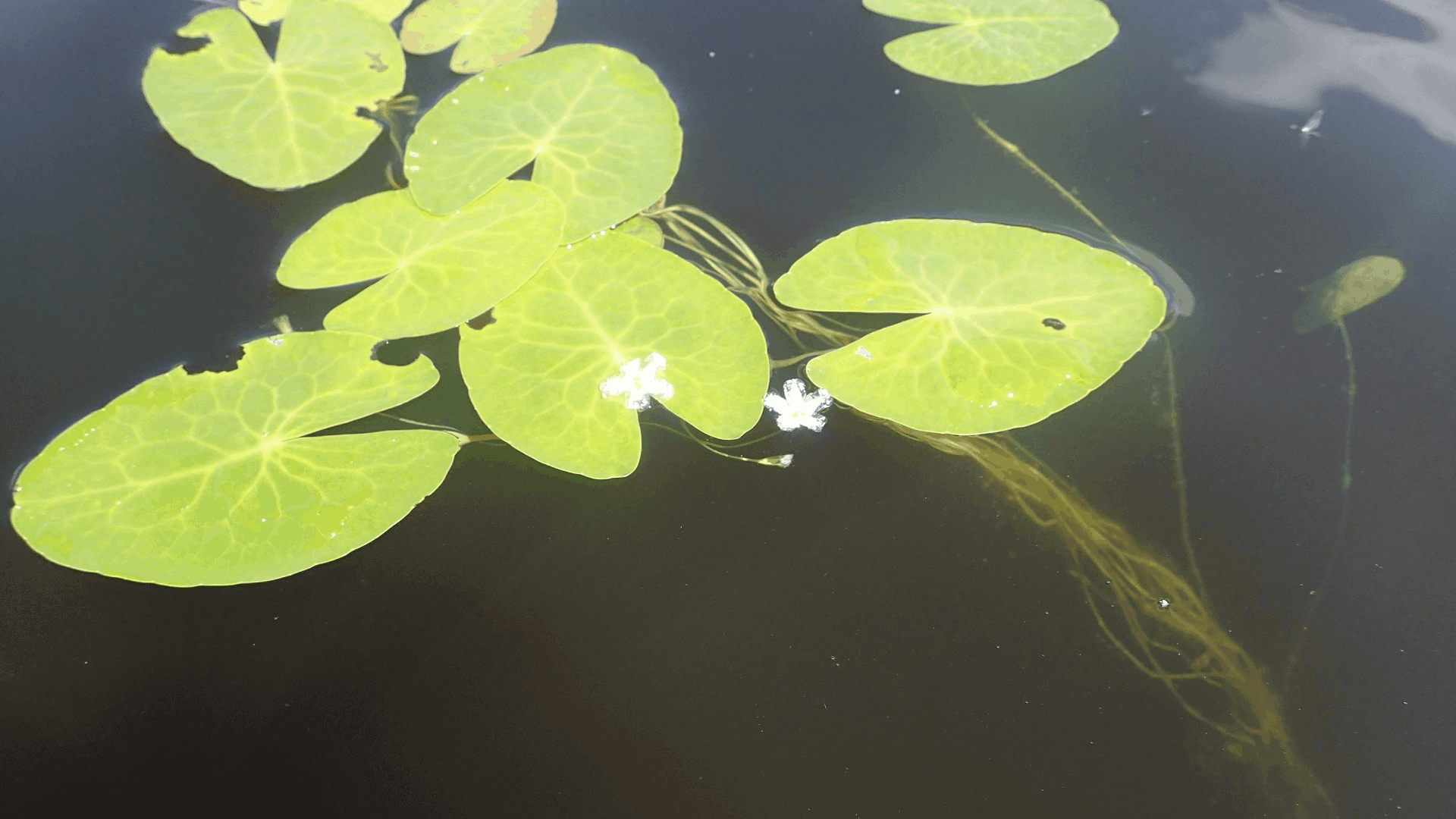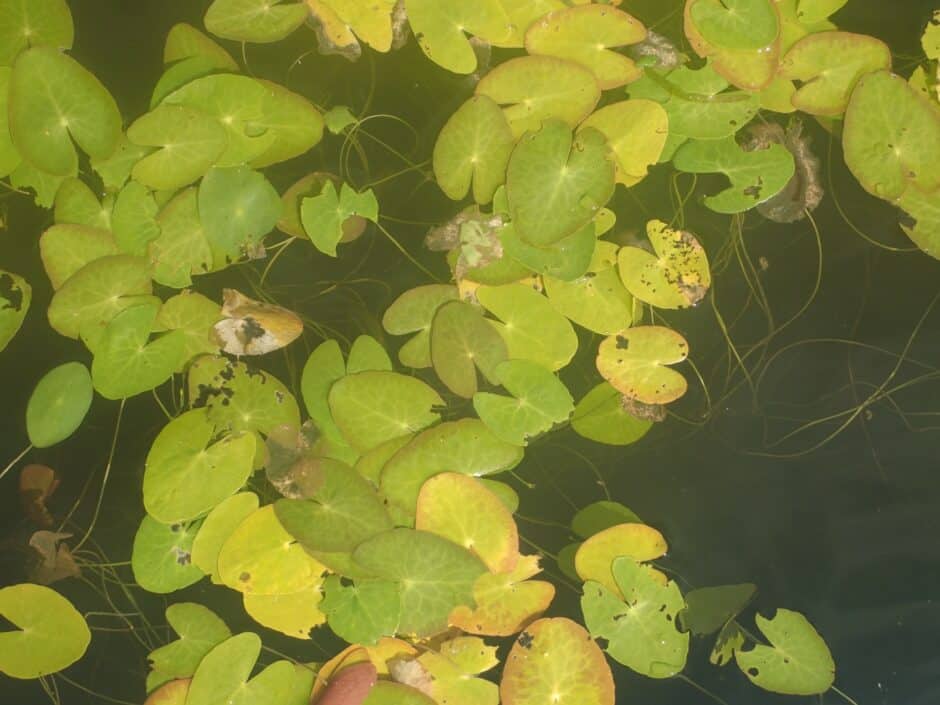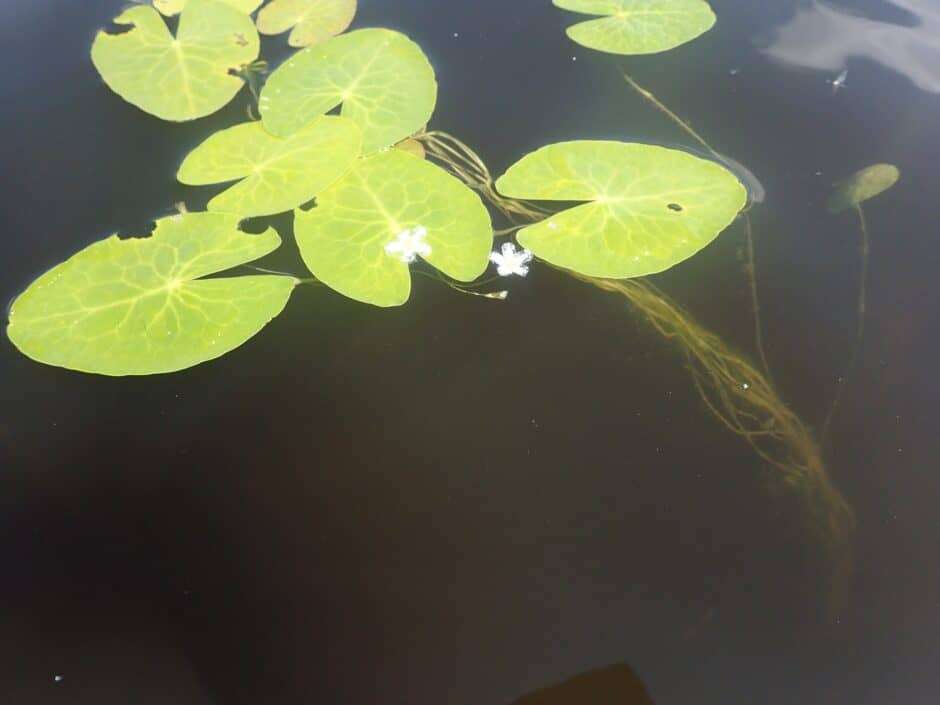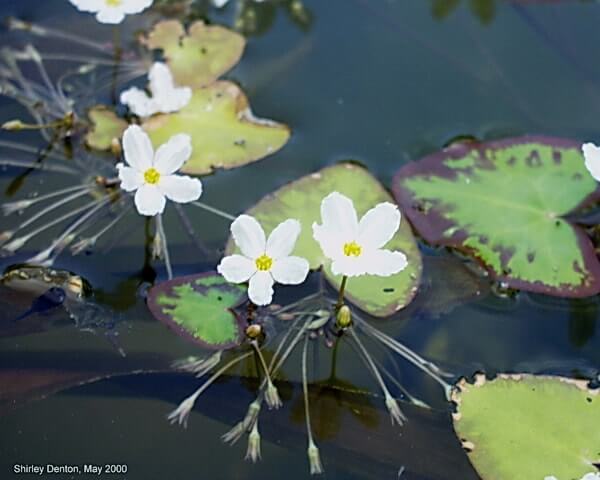Posted: September 17, 2020
Invasive or not? Responding to potential invaders requires proper identification.

In July, Riverwatcher Jennifer Haughton submitted a report of some water lily like plants that had recently taken over a large section of Webb’s Bay, an embayment of the Ottawa River in Bristol, QC.
This summer Ottawa Riverkeeper received a number of reports of invasive species showing up in the watershed. Non-native species can colonise areas of the watershed, oftentimes outcompeting native species and decreasing our natural biodiversity. We welcome these reports, as they provide us with information and insight about the health of the watershed and the species that may be threatening it.
In July, Riverwatcher Jennifer Haughton submitted a report of some water lily like plants that had recently taken over a large section of Webb’s Bay, an embayment of the Ottawa River in Bristol, QC. On first examination of the photos, which were taken at a distance, it was suspected that what was being seen was the invasive species known as Yellow Floating Heart.


First photos from Jennifer
Yellow Floating Heart is an invasive aquatic plant that can be found in both Ontario and Quebec, most commonly in slowly moving waters. It is often used as an ornamental species in ponds and its ability to reproduce from even small pieces of stem or seed means it can be easily dispersed to new environments. However, as the photos we received were taken at a distance and the plant’s flowers weren’t easily visible, a conclusive identification couldn’t be made.

Second photo from Jennifer
A few weeks later Jennifer was able to provide some close-up photos. Upon initial examination we were quite taken aback; was this instead the Water Snowflake (Nymphoides indica), and had it established itself in the Ottawa River watershed!?
For those who are not familiar with it, Nymphoides indica, commonly known as Water Snowflake, are a species of aquatic plant found in tropical regions around the world. They are found most notably in tropical and subtropical Asia and the Pacific southwest, with some reports of naturalized populations in southern US states such as Florida. The Water Snowflake has been known to be imported to locations outside of its natural range for use as an ornamental plant in ponds, which could explain its occurrence in the Ottawa River.
To date, there have been no official reports of the Water Snowflake in Canadian waters and it is not listed on either Ontario or Quebec’s list of invasive species to look out for. Should we sound the alarm? With a possible new invader on our hands we reached out to some local experts for a second opinion.
It’s lucky we did!

Photo of the Water Snowflake (Nymphoides indica)
One of the experts we reached out to was ecologist and co-founder of Ottawa Riverkeeper, Daniel Brunton. Daniel was able to identify the species we were looking at. It turns out we were not in fact looking at N. indica, but its very much non-invasive cousin Nymphiodes Cordata, also known as Floating Heart (not to be confused with the actually invasive Yellow Floating Heart mentioned previously). We learned that N.Cordata is not an invasive species, but that its presence is in fact a great sign for the health of the area! Daniel shared that Floating Heart are often found in rich aquatic communities. While uncommon in the Ottawa area, Floating Heart can be found in the Ottawa River, particularly in the stretch between Renfrew, ON and Pontiac, QC (corresponding with the area Jennifer made her observation).

Photo of the Floating Heat (Nymphiodes Cordata)
While it was really interesting to learn about the Water Snowflake, at the end of the day we’re happy to learn that there are no new invasive species to look out for. In fact, the presence of this native species would indicate that things are looking good in terms of aquatic biodiversity in Webb’s Bay.
A big thanks to Jennifer for bringing this to our attention and for being inquisitive about the plants she comes across while out on the water. And another big thanks to Daniel for assisting us with the identification and helping us understand more about this unique species. If you spot something amiss in the river, be it a suspected invasive species or pollution, please alert us using our Pollution Hotline.

Very cool, and great to be learning more about the river’s ecosystem! Thanks for sharing this.